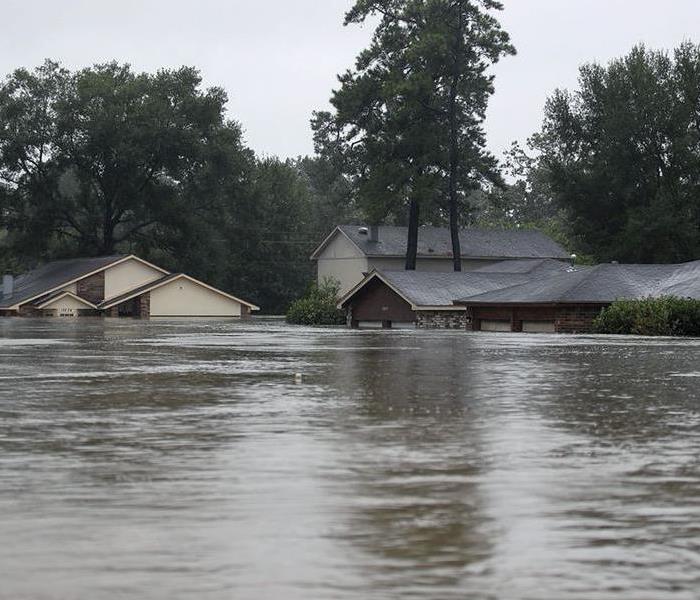Reducing Storm Damage
3/16/2018 (Permalink)
Reduce flood damage to your home.
More great information from https://disastersafety.org/
While flooding can occur at any time of year, the spring is a particularly troublesome time of year as snow and ice melts and seasonal rains begin. IBHS suggests the following improvement projects to help protect property against potential flood damage.
Flooding and flash flooding are a leading cause of weather-related fatalities in the United States, according to the National Weather Service. Floods are also the most common weather-related cause of property damage in the nation. During Hurricane Sandy, many property owners were caught off guard by the risk that flooding posed as the storm came ashore. This misunderstanding of their flood risk led to many deaths and injuries. Homes were washed away, and businesses were heavily damaged by flood waters. Ultimately, Sandy resulted in $6.7 billion in National Flood Insurance Program (NFIP) payouts as of July 2013, second only to Hurricane Katrina’s $16.3 billion in payouts in August 2005, according to the Insurance Information Institute.
Understand Your Flood Risk
Updated Flood Maps
A flood map (sometimes referred to as a floodplain map or FEMA flood map) can be used to identify floodplain location and flood zones. IBHS encourages residents to learn about the flooding risk of their properties and take steps to reduce that risk. The best place to start is by finding out what flood zone, from high to low risk, your property is in. The Federal Emergency Management Agency (FEMA) works with each municipality to create and update flood maps that show the flood zone for each part of the community. You can look up your property on the local flood map by visiting FEMA’s Flood Map Service Center or contacting your city or county government. Your insurance agent or mortgage lender may also be able to assist.
Floods maps are redrawn by FEMA to reflect new information and recommendations. In fact, many communities are currently receiving new, more detailed flood maps as part of an ongoing flood map modernization effort by FEMA. Consult your city or county building department to determine if your local maps have been or will soon be updated. If an update has recently been completed or is ongoing, it is recommended that you review the maps to see if the redrawing has affected the flood zone for your property.
Additional information on looking up your property on flood maps and the meaning of the flood zone designations is available at FloodSmart.gov. It is important to note that there are many times when a building can experience flood damage—even if it is not located within a high-risk flood area on the flood map. Therefore, it is best to get an understanding of the flood zone of your entire surrounding area to fully understand your risk.
Know Your Base Flood Elevation
Once you know what flood zone your property is in, it is important to find out what the Base Flood Elevation (BFE) is for your property. The BFE is the elevation at which your building has a one percent chance of flooding annually. You can find the BFE for your property listed on many flood maps, especially newer ones, or by contacting your local building department, or hiring a licensed surveyor. After identifying the BFE for your property, you need to determine whether the elevation of your building’s lowest floor is above or below the published BFE for your property. If your building is below the BFE for the area, you should consider elevating your structure to reduce the chances it will flood. IBHS recommends that buildings be at least 3 feet above the BFE to account for higher-than-expected flooding levels.
Flood Insurance
Once you know what your risk is, you also should consider purchasing flood insurance, especially if you find you are in, or near, a high-risk flood zone (Special Flood Hazard Area). Flood insurance is provided through the federal National Flood Insurance Program (NFIP), and can be purchased through private insurance agents and companies. If you have a federally backed mortgage, be aware that your lender may require you to purchase flood insurance if you are in or near a high-risk flood zone.
- Raise Electrical System Components—Hire a licensed electrician to raise electric components (switches, sockets, circuit breakers and wiring) at least 12 inches above the base flood elevation (BFE) for your area. You can find out your property’s BFE by contacting your local building department. Raising electrical system components above the anticipated flood level will help prevent damage to the electrical system and avoid the potential for fire from short circuits in flooded systems.
- Raise or Floodproof HVAC Equipment—Floodwaters can extensively damage heating, ventilation, and cooling (HVAC) equipment. The extent of the damage depends upon the depth of flooding and how long the equipment is underwater. A good way to protect the HVAC equipment is to have a contractor move it to an upper floor or build a flood-proof wall around the equipment.
- Direct Water Away From Building—Make sure your yard’s grading (slope) directs water away from the building.
- Anchor Fuel Tanks—Unanchored fuel tanks outside your home can damage your building or be swept downstream, damaging other properties. The supply line to an unanchored tank in your basement also can tear free and fuel can contaminate your basement.
- Install Sewer Backflow Valves—Flooding in some areas can cause sewage from sanitary sewer lines to back up through drain pipes. Backflow valves are designed to block drain pipes temporarily and prevent return flow into the house.
- Sump Pumps—Make sure your sump pump is working properly and battery is fully charged.
- Protect Wells From Contamination by Flooding—Floodwater that enters a well can contaminate it and make the water unsafe to drink. A licensed well-drilling contractor can inspect your well and suggest improvements.






 24/7 Emergency Service
24/7 Emergency Service
